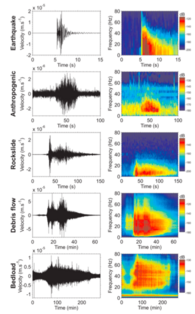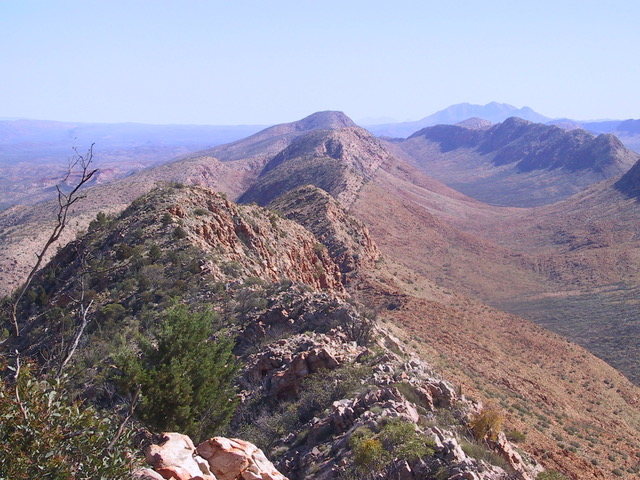Praktika für Studierende
Innerhalb der Sektion 4.7 haben wir die Möglichkeit, Praktika für Studierende (gegen Ende des Bachelorstudiums) und / oder Kurzprojekte für Master-Studenten anzubieten. Wir sind auf die Entwicklung und den Einsatz fortschrittlicher Technologien zur Untersuchung der Erdoberfläche unter der Wirkung von tektonischen Kräften und Klima spezialisiert. Wir heißen Praktikanten und Masterstudierende aus den Geowissenschaften, der Angewandten Mathematik, Physik oder Biologie willkommen, die daran interessiert sind, Erfahrungen in der Computermodellierung von Oberflächenprozessen zu sammeln.
Mögliche Projekte sind:
- Untersuchung des Einflusses der Niederschlagsvariabilität (in Raum und Zeit) auf die Landschaftsentwicklung
- Der Zusammenhang zwischen Landschaft und Evolution des Lebens
- Entwicklung hocheffizienter Algorithmen zur Lösung von Gleichungen in der Landschaftsentwicklung
- Invertierung der Landschaftsmorphologie, um die tektonische Aktivität und / oder das Klima der Vergangenheit zu belegen
- Invertierung der sedimentären Abfolge
- Untersuchung der Interrelation zwischen Modell und Morphometrie
- usw.
Sehen Sie sich alle laufenden Forschungsprojekte auf unserer Website an und / oder kontaktieren Sie uns über unser Sekretariat, wenn Sie an einem Praktikum oder Projekt bei uns interessiert sind. Senden Sie uns Ihr Anschreiben und Ihren Lebenslauf am besten gleich in englischer Sprache.
Beispiel einer Modellierung
Offenes Projekt: Identify and label seismic signals with a time-frequency analysis for different surface processes
The mass movements at the Earth’s surface generate seismic waves that are recorded by nearby seismometers and can be used to monitor mass transfer throughout the landscape. Recently, the analysis of these seismic records has continuously increased in popularity and has led to the development of a new area called environment seismology. Surface processes may vary in nature, mechanism, magnitude, space, and time, and this variability which can be observed in the seismic records. The question becomes whether we can distinguish different processes from each other and how to do that. We want to apply machine learning and data science to distinguish and decipher this information. For a machine learning project (supervised learning), it is crucial to have a well-labeled dataset. For this project, we will use a four-year seismic signal dataset for debris flow, landslide, and flood from multiple monitoring stations built by GFZ at Illgreban, Switzerland. The intern will help us to identify and label these seismic records for different processes. This intern project will be a fundamental part of ‘SMART Monitoring’ project carried out between Section 4.6 Geomorphology and Section 4.7 Earth Surface Process Modeling.
Offenes Projekt: Modelling the evolution of the central Australian landscape
Co-supervisors:
Jean Braun, GFZ
Alfredo Camacho, University of Manitoba, Canada
Project description:
The present day central Australian landscape was shaped by two major intracontinental orogenies, namely the Petermann (ca. 600-520 Ma) and the Alice Springs (ca. 420-320 Ma), the remnants of which are still visible today as the Peterman and MacDonnell Ranges. Major east-west striking shear zones that exhumed deep crustal rocks of the Musgrave and Arunta Province to shallower crustal levels are associated with these orogenies. Not only was surface topography prominently transformed, but the underlying Moho was displaced by as much as 25 km along crustal scale shear systems such as the Woodroffe Thrust (Petermann) and Redbank Thrust (Alice Springs).
The effects of the Alice Springs Orogeny are preserved as spectacular regional-scale folds in the sedimentary Amadeus Basin, which separates the Musgrave Province, in the south, from the Arunta Inlier in the north. Considering the widespread extent of the Alice Springs Orogeny in central Australia, evidence in the Musgrave Province is at best cryptic. Fractures with epidote–quartz alteration have been related to the Alice Springs Orogeny. In addition, Carboniferous 40Ar/39Ar ages in the low temperature steps of K-feldspar and a magnetic overprint component in magnetite, have been associated with the thermal effects of the Alice Springs Orogeny. Noticeably, these fluid or thermal events have not reset the 40Ar/39Ar or Rb/Sr systematics in micas that are synkinematic with the Petermann Orogeny.
An MSc project is available to a student who is keen to understand crustal-scale deformation in an intracontinental setting using various thermochronological and geophysical data sets. You will use the thermo-kinematic software Pecube to explore various scenarios where Moho topography can be preserved after substantial cooling (which we attribute to exhumation) rather than removal of a sedimentary cover.
Pre-requisites:
A degree in geology/Earth sciences with some experience and/or strong interest in using computer software to interpret geological data.


